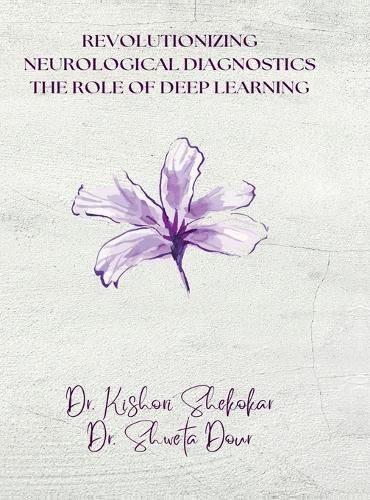Readings Newsletter
Become a Readings Member to make your shopping experience even easier.
Sign in or sign up for free!
You’re not far away from qualifying for FREE standard shipping within Australia
You’ve qualified for FREE standard shipping within Australia
The cart is loading…






This title is printed to order. This book may have been self-published. If so, we cannot guarantee the quality of the content. In the main most books will have gone through the editing process however some may not. We therefore suggest that you be aware of this before ordering this book. If in doubt check either the author or publisher’s details as we are unable to accept any returns unless they are faulty. Please contact us if you have any questions.
Neurological disorders pose a significant global health burden, affecting millions
of individuals and imposing considerable challenges on healthcare systems. Early and
accurate diagnosis is crucial for effective management and treatment. In recent years,
deep learning methods have emerged as powerful tools for medical image analysis,
offering promising avenues for automated detection and diagnosis of neurological
disorders. This abstract provides an overview of the current state of research in this
field, highlighting key methodologies, challenges, and future directions. Neurological
disorders encompass a broad range of conditions affecting the nervous system,
including the brain, spinal cord, and peripheral nerves. Traditional diagnostic
approaches often rely on clinical assessments, which may be subjective and timeconsuming. The advent of deep learning techniques has revolutionized medical image
analysis, enabling the development of automated systems that can assist in the early
and accurate detection of neurological disorders. Epilepsy is a neurological disorder
characterized as the recurrence of two or more unprovoked seizures. The common and
significant tool for aiding in the identification of epilepsy is electroencephalography
(EEG).
$9.00 standard shipping within Australia
FREE standard shipping within Australia for orders over $100.00
Express & International shipping calculated at checkout
This title is printed to order. This book may have been self-published. If so, we cannot guarantee the quality of the content. In the main most books will have gone through the editing process however some may not. We therefore suggest that you be aware of this before ordering this book. If in doubt check either the author or publisher’s details as we are unable to accept any returns unless they are faulty. Please contact us if you have any questions.
Neurological disorders pose a significant global health burden, affecting millions
of individuals and imposing considerable challenges on healthcare systems. Early and
accurate diagnosis is crucial for effective management and treatment. In recent years,
deep learning methods have emerged as powerful tools for medical image analysis,
offering promising avenues for automated detection and diagnosis of neurological
disorders. This abstract provides an overview of the current state of research in this
field, highlighting key methodologies, challenges, and future directions. Neurological
disorders encompass a broad range of conditions affecting the nervous system,
including the brain, spinal cord, and peripheral nerves. Traditional diagnostic
approaches often rely on clinical assessments, which may be subjective and timeconsuming. The advent of deep learning techniques has revolutionized medical image
analysis, enabling the development of automated systems that can assist in the early
and accurate detection of neurological disorders. Epilepsy is a neurological disorder
characterized as the recurrence of two or more unprovoked seizures. The common and
significant tool for aiding in the identification of epilepsy is electroencephalography
(EEG).